| Description |
3′-Azido-2′,3′-dideoxyuridine (AzdU) is a nucleoside analog of Zidovudine (HY-17413). 3′-Azido-2′,3′-dideoxyuridine is a potent inhibitor of human immunodeficiency virus (HIV) replication in human peripheral blood mononuclear cells (PBMC) with limited toxicity for human bone marrow cells (BMC)[1][2][3].
|
| Related Catalog |
|
| Target |
HIV
|
| In Vitro |
3'-Azido-2',3'-dideoxyuridine 抑制感染 HIV-1 的 PBMC 中的 HIV 复制,中位有效浓度为 0.18-0.46 μM[2]。 3'-Azido-2',3'-dideoxyuridine 抑制人类 T 细胞系 MT-4 和 ATH8 中 HIV 介导的细胞病变效应,中位有效浓度为 0.4 µM[3]。< br/>3'-Azido-2',3'-dideoxyuridine 依次被细胞激酶磷酸化为单磷酸、二磷酸和三磷酸代谢物[3]。
|
| In Vivo |
3′-Azido-2′,3′-dideoxyuridine (25-100 mg/kg, 静脉注射或者灌胃,一次)具有良好的药代动力学特征[3]。 Pharmacokinetic Parameters of 3′-Azido-2′,3′-dideoxyuridine in male Sprague-Dawley rats[3]. IV (25 mg/kg) IV (100 mg/kg) PO (25 mg/kg) PO (100 mg/kg) Cmax (μg/mL) 9.2±1.9 41±15 Tmax (h) 0.38±0.13 0.63±0.22 AUC (μg/mL∗h) 19±1.2 156±7.0 12±0.54 70±13 CLT (L/h/kg) 1.4±0.2 0.70±0.09 CLR (L/h/kg) 0.90±0.27 0.43±0.12 t1/2 (h) 0.5±0.0 0.68±0.1 1.0±0.3 1.1±0.4 Vss (L/kg) 0.78±0.26 0.34±0.11 F (%) 60 46 Animal Model: Adult male Sprague-Dawley rats (300-400 g)[3] Dosage: 25, 100 mg/kg Administration: Intravenous bolus injection or oral gavage (Pharmacokinetic Analysis) Result: The oral bioavailability estimates of 3′-Azido-2′,3′-dideoxyuridine at doses of 25 and 100 mg/kg averaged 53%.
|
| References |
[1]. Zhu Z, et al. Cellular metabolism of 3'-azido-2',3'-dideoxyuridine with formation of 5'-O-diphosphohexose derivatives by previously unrecognized metabolic pathways for 2'-deoxyuridine analogs. Mol Pharmacol. 1990 Dec;38(6):929-38. [2]. Chu CK, et al. Structure-activity relationships of pyrimidine nucleosides as antiviral agents for human immunodeficiency virus type 1 in peripheral blood mononuclear cells. J Med Chem. 1989 Mar;32(3):612-7. [3]. Kong L, et al. Pharmacokinetic evaluation of 3'-azido-2', 3'-dideoxyuridine-5'-O-valinate-hydrochloride as a prodrug of the anti-HIV nucleoside 3'-azido-2', 3'-dideoxyuridine. Antivir Chem Chemother. 2003 Sep;14(5):263-70.
|
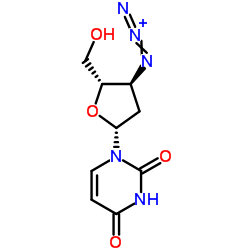
 CAS#:84472-84-4
CAS#:84472-84-4 CAS#:85236-87-9
CAS#:85236-87-9![1-[4-methylsulfonyloxy-5-(trityloxymethyl)oxolan-2-yl]pyrimidine-2,4-dione Structure](https://image.chemsrc.com/caspic/421/5983-03-9.png) CAS#:5983-03-9
CAS#:5983-03-9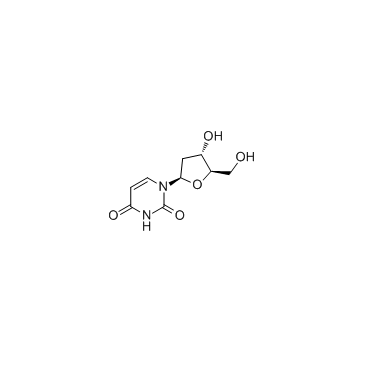 CAS#:951-78-0
CAS#:951-78-0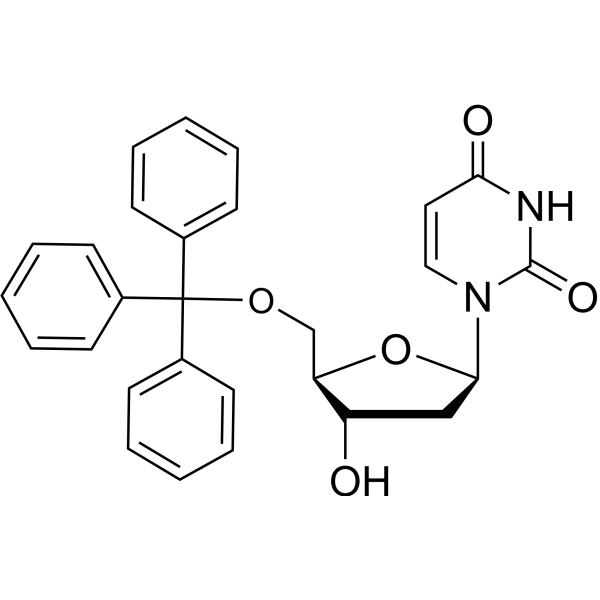 CAS#:14270-73-6
CAS#:14270-73-6![1-[4-methylsulfonyloxy-5-(trityloxymethyl)oxolan-2-yl]pyrimidine-2,4-dione Structure](https://image.chemsrc.com/caspic/224/6038-53-5.png) CAS#:6038-53-5
CAS#:6038-53-5![1-[4-hydroxy-5-(trityloxymethyl)oxolan-2-yl]pyrimidine-2,4-dione Structure](https://image.chemsrc.com/caspic/399/84472-83-3.png) CAS#:84472-83-3
CAS#:84472-83-3![1-[3-chloro-2,3-dideoxy-5-O-(triphenylmethyl)-β-D-threo-pentofuranosyl]-2,4(1H,3H)-pyrimidinedione Structure](https://image.chemsrc.com/caspic/040/85236-88-0.png) CAS#:85236-88-0
CAS#:85236-88-0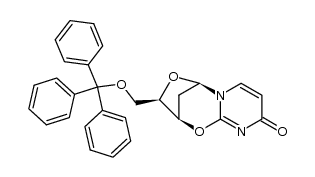 CAS#:5964-40-9
CAS#:5964-40-9 CAS#:78508-96-0
CAS#:78508-96-0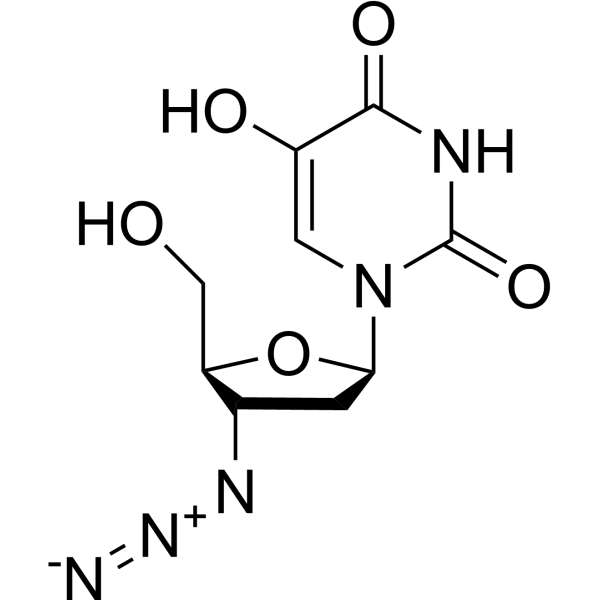 CAS#:111495-90-0
CAS#:111495-90-0![1-[(2R,4S,5S)-4-azido-5-(hydroxymethyl)oxolan-2-yl]-5-methylsulfanylpyrimidine-2,4-dione structure](https://image.chemsrc.com/caspic/014/111495-97-7.png) CAS#:111495-97-7
CAS#:111495-97-7![[1-[(2R,4S,5S)-4-azido-5-(hydroxymethyl)oxolan-2-yl]-2,4-dioxopyrimidin-5-yl] thiocyanate structure](https://image.chemsrc.com/caspic/052/111495-96-6.png) CAS#:111495-96-6
CAS#:111495-96-6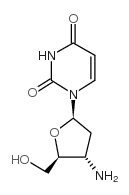 CAS#:84472-86-6
CAS#:84472-86-6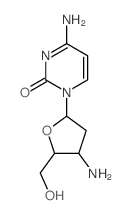 CAS#:84472-90-2
CAS#:84472-90-2![2-[1-[(2R,4S,5S)-4-azido-5-(hydroxymethyl)oxolan-2-yl]-2,4-dioxopyrimidin-5-yl]oxyacetonitrile structure](https://image.chemsrc.com/caspic/090/111495-95-5.png) CAS#:111495-95-5
CAS#:111495-95-5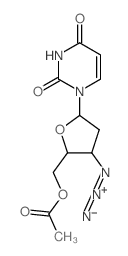 CAS#:84472-87-7
CAS#:84472-87-7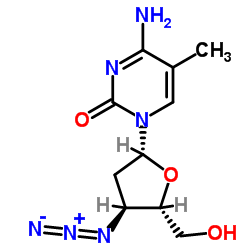 CAS#:84472-89-9
CAS#:84472-89-9